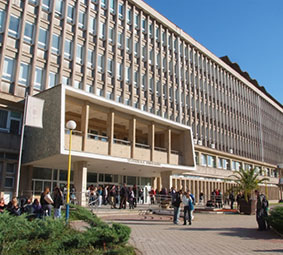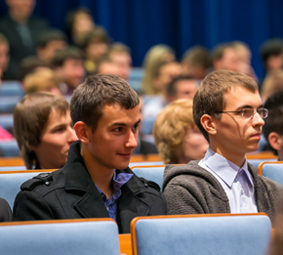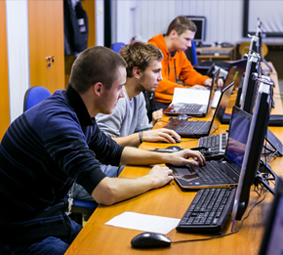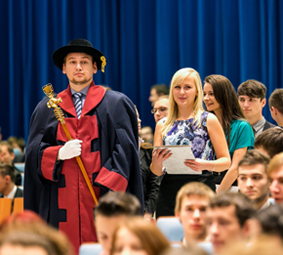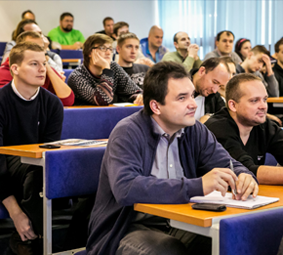Projects
| Project name | Project description |
|---|---|
| Computer-Aided Decision Support System for Hepatic Encephalopathy |
The goal of this project is to provide deep speech and handwriting analysis and investigate whether speech and handwriting can be used for diagnosis and monitoring of hepatic encephalopathy and whether there exists relationship between speech, handwriting and other biomarkers in hepatic encephalopathy. The number of novel signal processing algorithms, which reveal alteration in handwriting and speech more accurately than existing approaches, are proposed, giving rise to new group of features. The robust feature selection algorithms select the optimal subset of these features, which are fed into non-parametric regression and classification algorithms, mapping the signal processing algorithm outputs to stage of hepatic encephalopathy. Even though proposed project is focused on particular disease, we expect that some of the outputs, such as new features will be applicable also for other diseases. |
| Pattern based domain-specific language development |
Domain-specific programming languages (DSL) provide a way to reduce the gap between problem solution described in terms of domain and its implementation executable by computer. Development of such languages is, however, still complex and tedious task. The goal of the project is to design methods and tools that would support development of DSLs using formalized patterns — well-established solutions to common problems. Patterns would represent knowledge in the area of language design and implementation in a form that can be easily applied to development of a new language. This would require identification of common patterns of language design and implementation and design of methods and tools for their utilization during development process. This includes methods for language specification based on pattern selection and combination and also automatized suggestion of patterns suitable for solved problems. |
| Virtual-reality technologies in the process of handicapped persons education |
The project focuses on the use of advaced methods and virtual reality technologies as progressive technologies in HCI (Human Computer Interaction) context for better, easier, faster and more attractive understanding of handicapped peoples education in those directions, which are characterized by tighter concepts. The project is a conceptual continuation of the previous pilot project. First goal is the creation of experimental workplace for validation of these technologies with subsequent impact to special pedagogical praxis. Next goal is a creation of software and support means of presentations either for desktop computers or mobile devices and the creation/extension of web page to access the developed software, procedures and examples. Particular attention is given to link these technologies with the educational process in the hearing-impaired persons and persons with multiple disabilities. It is assumed that this way will get better, faster and easier to understand the basic communication methods for these peoples, it increase their ability to correct practical application and integration into modern information society. |
| Integrating software processes into the teaching of programming |
The strategic objective of the project is to search for new methods, forms and technologies enabling integration of teaching of software engineering processes into the programming courses at universities in computer science and information technology curricula. Currently, in the information technology courses, teaching of programming is often separated from the procedural aspect of software development. However, in practice, when developing software systems the technologies, principles and processes are inseparable and they are applied systematically throughout the whole software development process. Based on the current state of teaching at universities, in this project we will systematically focus on exploring new methods and forms of teaching software development courses, which would allow teaching of programming, technologies and processes of software development as a single harmonious unit. Building on the previous statements, we propose that the innovation of content of many software development courses is equally important as the creation of tool support that relieves teachers from uncreative and time-consuming tasks. To support programming teaching methods in the area of designing and developing tools, we will focus on the issue of simulation of software engineering process during student’s development of a software product. In the project solution, the simulation will represent members of the project team, including project manager, who will monitor and supervise the completion of tasks and procedures in the context of the defined process. The tool support will enable automation of providing immediate feedback for students, thus providing the teacher more time for individual approach to the student. |
| Analýza písma pre klinické počítačové systémy pre podporu rozhodovania |
|
| Improving Applicability of Nature-Inspired Optimisation by Joining Theory and Practice |
Nature-inspired search and optimisation heuristics are easy to implement and apply to new problems. However, in order to achieve good performance it is usually necessary to adjust them to the problem at hand. Theoretical foundations for the understanding of such approaches have been built very successfully in the past 20 years but there is a huge disconnect between the theoretical basis and practical applications. The development of powerful analytical tools, significant insights in general limitations of different types of nature-inspired optimisation methods and the development of more practically relevant perspectives for theoretical analysis have brought impressive advances to the theory-side of the field. However, so far impact on the application-side has been limited and few people in the diverse potential application areas have benefitted from these advances. The main objective of the COST Action is to bridge this gap and improve the applicability of all kinds of nature-inspired optimisation methods. It aims at making theoretical insights more accessible and practical by creating a platform where theoreticians and practitioners can meet and exchange insights, ideas and needs; by developing robust guidelines and practical support for application development based on theoretical insights; by developing theoretical frameworks driven by actual needs arising from practical applications; by training Early Career Investigators in a theory of nature-inspired optimisation methods that clearly aims at practical applications; by broadening participation in the ongoing research of how to develop and apply robust nature-inspired optimisation methods in different application areas. |
| Evaluation and metrics of domain usability |
Usability makes the work with user interfaces better and more effective in all domains. Domain usability is an aspect of general usability, which deals with the domain content of user interfaces from the terminological point of view. If there are incorrect terms in the user interface, or it contains grammatical or stylistical errors, its usability is lowered. The main goal of this project is to design a method and tools, which would support the development of usable user interfaces from the domain point of view. This way we want to contribute to the development of better and more human-friendly user interfaces. This goal requires the identification of methods for evaluating the usability of user interfaces and metrics, which are used in this evaluation. Consequently, the design of metrics and automatized method for evaluating domain usability of user interfaces is needed. |
| Integrácia základných teórií softvérového inžinierstva do predmetov informatických študijných programov technických univerzít - návrh štruktúry a realizácia predmetov |
|
| Towards a Software Engineering Discipline for Green Software |
The goal of this project is to study and propose novel techniques to provide programmers with models that will allow them to reason about their programs in terms of energy consumption. Moreover, we aim to develop tools, like energy profilers, energy smell detectors, energy refactorings, energy testing frameworks, and energy optimizations, so that abnormal energy consumption can be related to a program’s source code and optimized. We will validate such techniques and tools with real-world applications. |
| Koalgebraické modely komponentových systémov |
Spoločenská prax si vyžaduje neustály vývoj rozsiahlych komplexných programových systémov. Jedným z najdôležitejších cieľov softvérového inžinierstva je vývoj spoľahlivých programových systémov, ktoré poskytujú očakávané výsledky podľa požadovaného správania. Komplexné systémy sú zložené z komponentov, ktoré sú vyvíjané nezávisle, často v rôznych programovacích jazykoch a paradigmách. Zároveň musia byť vzájomne prepojené tak, že ich kooperáciou sa dosiahne očakávané správanie celého systému. Preto interakcie medzi komponentmi, kontrakty a závislosti sú kľúčovým pojmom v komplexnom systéme. Konštrukcia verifikovateľného modelu správania sa komponentových systémov je dôležitou súčasťou formulácie behaviorálnych modelov komplexných systémov. V tomto projekte navrhneme explicitné koalgebraické modely, metódy verifikácie a postupy, ktoré sa použijú pri sledovaní správania komplexných programových systémov. Tým projekt prispeje k teoretickým aj praktickým aspektom softvérového inžinierstva. |

